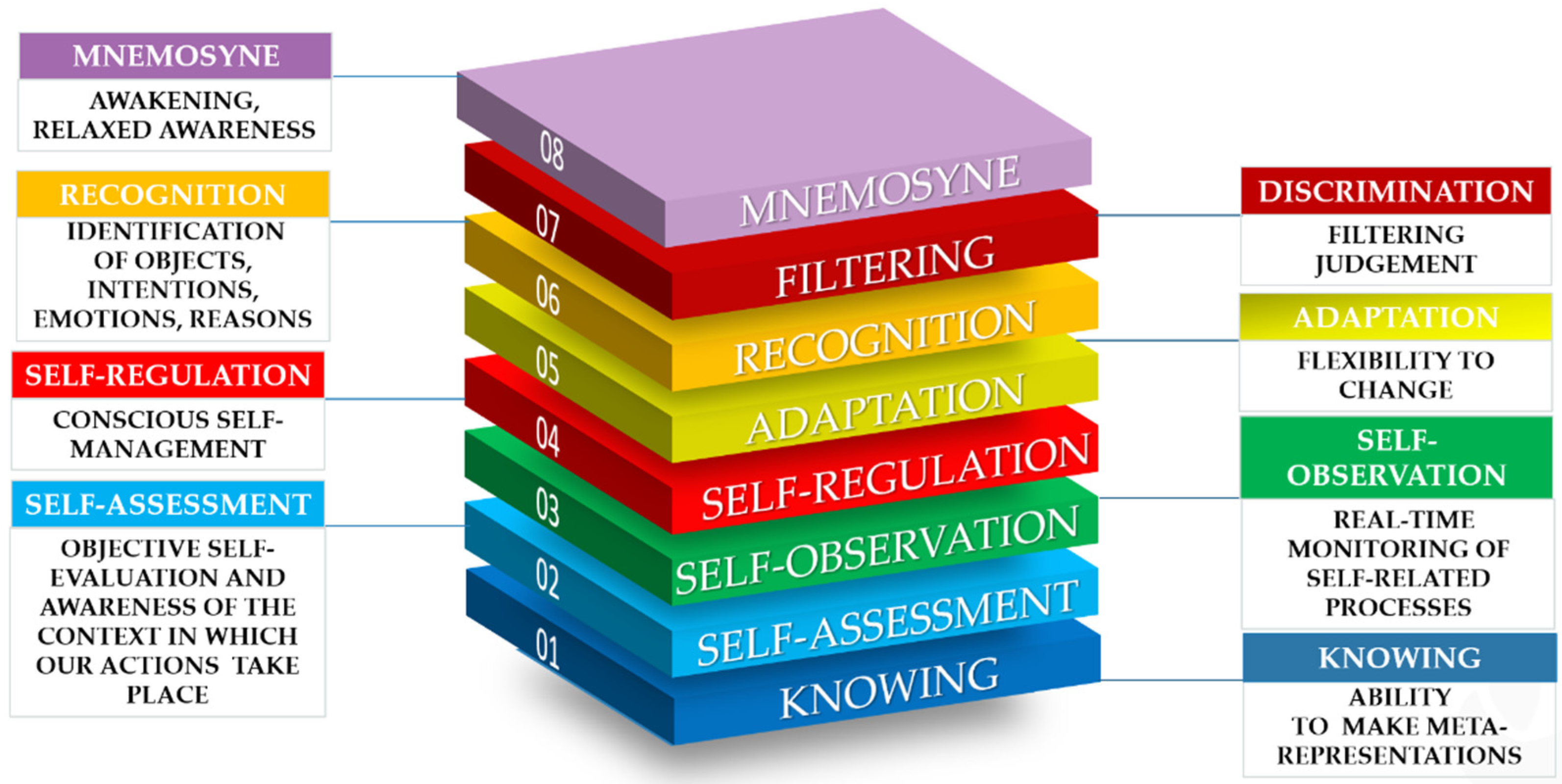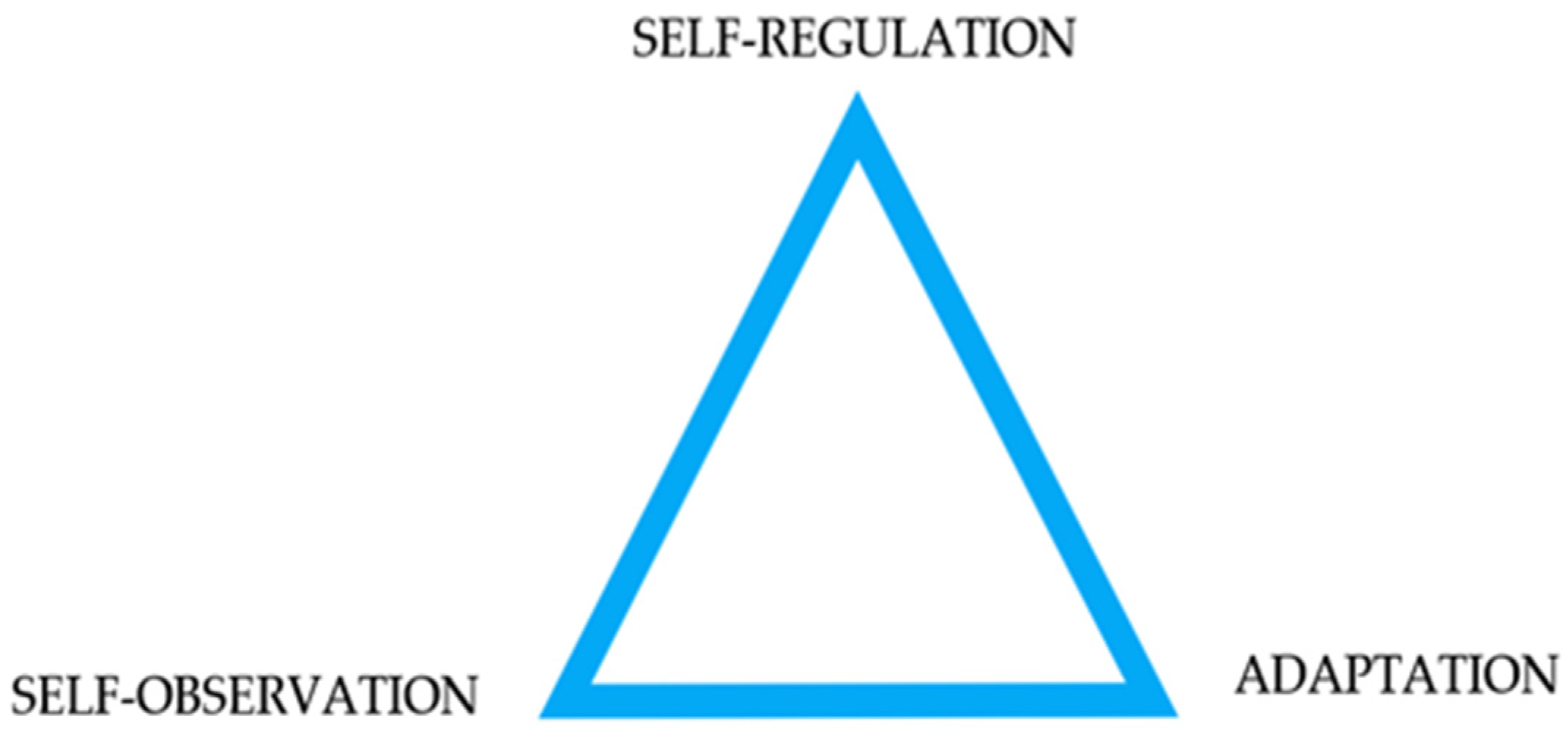
| Version | Summary | Created by | Modification | Content Size | Created at | Operation |
|---|---|---|---|---|---|---|
| 1 | Athanasios S. Drigas | -- | 10878 | 2022-09-09 17:17:23 | | | |
| 2 | Conner Chen | -4991 word(s) | 5887 | 2022-09-30 06:23:08 | | | | |
| 3 | Conner Chen | Meta information modification | 5887 | 2022-09-30 06:25:30 | | | | |
| 4 | Athanasios S. Drigas | -1 word(s) | 5886 | 2022-10-18 17:56:33 | | | | |
| 5 | Conner Chen | Meta information modification | 5886 | 2022-10-21 02:40:50 | | | | |
| 6 | Conner Chen | + 2 word(s) | 5888 | 2022-10-21 02:42:03 | | |
Video Upload Options
Learning disabilities are defined as a set of neurodevelopmental disorders of biological basis that induce cognitive abnormalities as well as symptoms related to emotional and behavioral disorders. Metacognition is defined by Drigas and Mitsea as the “set of regulatory meta-abilities and meta-skills that are consciously applied aiming at the smooth operation of the cognitive & psychophysiological mechanism as a means of achieving functional capability, self-efficacy, independent living & life satisfaction. Virtual reality (VR) is commonly regarded as a technology that induces virtual immersion in a digital world via the use of a computerized graphic simulation that allows users to immerse themselves in an interactive three-dimensional world brimming with various sensory and emotional experiences.
1.1. Learning Disabilities
1.2. Classification of Learning Disabilities
- Deficits in fundamental cognitive abilities include perception (especially visual perception), attention (with the focus on attentional control processes), and memory (especially working memory) [4][5][6][7].
- Behavioral problems, heavy stress, depression, phobias, and mood disorders [8][9][10][11][12].
- Metacognitive deficits in terms of self-control and self-awareness [13][14].
1.3. Metacognition (Definition)
1.4. The Eight Pillars of Metacognition
- Acquiring knowledge: Humans’ ability to construct knowledge, especially about their cognitive mechanisms, making meta-representations of the knowledge. It includes also grasping the concept of cognition, its functions, as well as its hierarchical relationships. It also requires comprehension about meta- abilities and meta-skills that allows people to “learn how to learn”. In other words, to be aware of the phenomenon of self-conscious learning itself.
- Applied knowledge: The human meta-ability to strategically use his/her mental tools evaluating the degrees of freedom defined by a specific situation, problem, or task. Applied knowledge requires experience and practical use of knowledge in the real world. It also implies self-awareness of personal strengths and weaknesses. Finally, it includes the ability to transfer previous knowledge to novel contexts.
- Self-observation: Real-time conscious monitoring of the external (exteroception) and internal processes (introspection). It is a kind of internal attention and control that lights up the patterns of thoughts and feelings, using the feedback received from the external environment such as our social environment. Therefore, self-observation is standing at the crossroad between intrapersonal and interpersonal routes. Although most typical individuals are aware of this capacity, it is a metacognitive, self-conscious meta-skill that develops gradually and after regular training.
- Self-regulation: The capability to restore any observed disturbance that disrupts the regular functioning of cognitive and psychophysiological operations (i.e., anxiety, impulses, over-reactivity).
- Adaptation: Individuals’ flexibility to adjust their mental functions and behavior in response to the demands of specific environments and personal goals.
- Recognition: The faculty of perception is what allows one to identify and be aware of sensations, objects, thoughts, and emotions. Furthermore, it entails individuals’ meta-ability to attribute mental and emotional states to themselves as well as others, to be empathetic, to perceive and predict intentions, and to comprehend the underlying motives.
- Discrimination: The ability to filter, assess, and strategically select what is vital or unnecessary in a given situation, in terms of information, knowledge, motivations, desires, attitudes, strategies, and behaviors. At a more abstract level, discrimination helps people to have prudence and make wise judgments and decisions.
- Mnemosyne: The state of awakening. The ability to voluntarily maintain a state of relaxed awareness while being awake, aiming to achieve peak performance. It also symbolizes the internalized wisdom that awakens and propels humans toward independence and self-fulfillment.
1.5. Virtual Reality
1.6. VR in Special Education
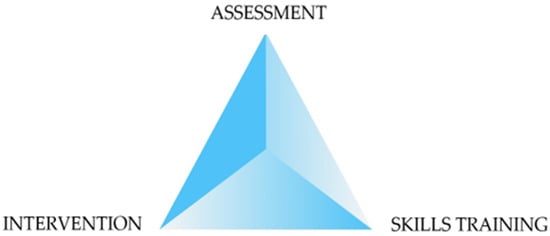
2. Virtual Reality and Metacognitive Skills in Special Education
3. Benefits of VR Environments in Special Education
4. Brain-Rewiring Techniques in Special Education
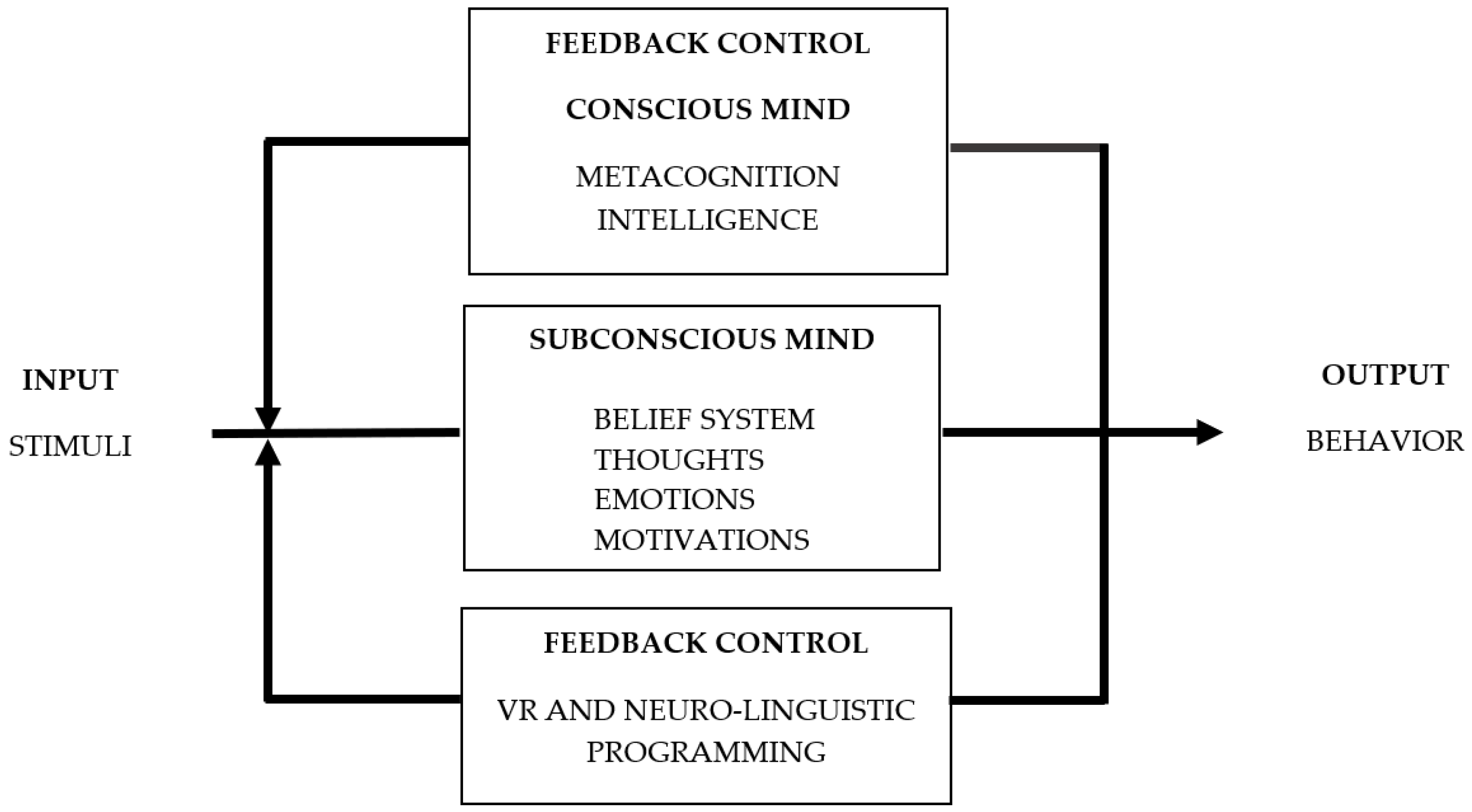
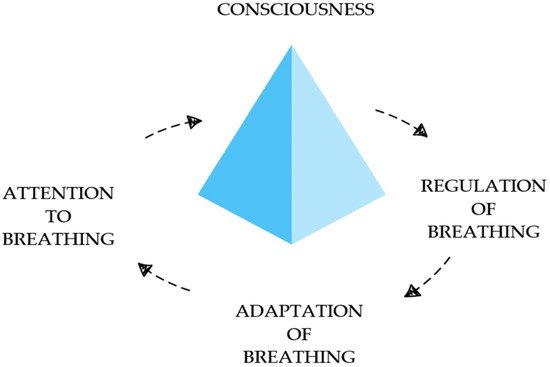
5. VR-Assisted Techniques for Metacognitive Skills Training in Special Education
5.1. VR Hypnosis Techniques (VRH)
| Type of Disorder | Main Findings |
|---|---|
| ADHD | Less inattentiveness and irritability |
| Optimism | |
| Better speed reaction | |
| AUTISM | Joint attention |
| Emotional receptivity and comprehension Improved motor behavior Self-control and social engagement Observation and recognition skills |
|
| DYSLEXIA | Better working memory |
| Visuospatial skills | |
| PHYSICAL IMPAIRMENTS |
Motor imagery Motor control Implicit learning |
| DOWN SYNDROME |
Improved retrieval of information |
| LANGUAGE DISORDERS |
Speech regulation, fluency Faster reading and listening Improved comprehension Resilience to failure |
| ANXIETY | Improved inhibition of the reaction of fear Decreased activation of the anxiety circuity |
| DEPRESSION | Disengagement from negative self-hypnosis Optimism |
| GIFTEDNESS | Creativity and problem solving Intrinsic motivation Flow, peak performance, enjoyment |
5.2. VR Neurolinguistic Programming Techniques
6. VR Subliminal Techniques Training
6.1. VR Speed Learning Techniques
6.2. VR Mindfulness Techniques
6.3. VR Breathing Techniques
7. Conclusions
References
- Widiger, T.A.; Costa, P.T., Jr. Personality Disorders and the Five-Factor Model of Personality: Rationale for the Third Edition; American Psychological Association: Washington, DC, USA, 2013; pp. 3–11.
- Joyce-Beaulieu, D.; Sulkowski, M.L. The Diagnostic and Statistical Manual of Mental Disorders: Fifth Edition (DSM-5) Model of Impairment. In Assessing Impairment; Springer: Boston, MA, USA, 2016; pp. 167–189.
- Muktamath, V.R.; Hegde, P.; Chand, S. Types of Specific Learning Disability. In Learning Disabilities-Neurobiology, Assessment, Clinical Features and Treatments; IntechOpen: London, UK, 2022.
- Karyotaki, M.; Drigas, A.; Skianis, C. Attentional control and other executive functions. Int. J. Emerg. Technol. Learn. 2017, 12, 3.
- Alloway, T.P.; Gathercole, S.E.; Kirkwood, H.; Elliott, J. The cognitive and behavioral characteristics of children with low working memory. Child Dev. 2009, 80, 606–621.
- Cheng, D.; Xiao, Q.; Chen, Q.; Cui, J.; Zhou, X. Dyslexia and dyscalculia are characterized by common visual perception deficits. Dev. Neuropsychol. 2008, 43, 497–507.
- Tarver, S.G.; Hallahan, D.P. Attention deficits in children with learning disabilities: A review. J. Learn. Disabil. 1974, 7, 560–569.
- Drigas, A.; Mitsea, E. Metacognition, stress-relaxation balance & related hormones. Int. J. Recent Contrib. Eng. Sci. IT (iJES) 2020, 9, 4–16.
- Alexopoulou, A.; Batsou, A.; Drigas, A. Resilience and Academic Underachievement in Gifted Students: Causes, Consequences and Strategic Methods of Prevention and Intervention. Int. J. Online Biomed. Eng. 2019, 15, 78.
- Doulou, A.; Drigas, A. Behavioral Problems in schools: A theoretical overview and the role of ICTs. Technium. Soc. Sci. J. 2022, 29, 54.
- Sideraki, A.; Papageorgiou, E.; Tsiava, M.; Drigas, A. Stress, Hormones & the role of ICT in autism. Tech. BioChemMed 2022, 3, 49.
- Shibata, Y.; Matsushima, M.; Takeuchi, M.; Kato, M.; Yabe, I. Inappropriate metacognitive status increase state anxiety in genetic counseling clients. Front. Psychol. 2022, 13, 871416.
- Mitsea, E.; Drigas, A.; Skianis, C. Metacognition in Autism Spectrum Disorder: Digital Technologies in Metacognitive Skills Training. Tech. Soc. Sci. J. 2022, 31, 153–173.
- Pappas, M.A.; Polychroni, F.; Drigas, A.S. Assessment of mathematics difficulties for second and third graders: Cognitive and psychological parameters. Behav. Sci. 2019, 9, 76.
- Drigas, A.; Mitsea, E. The 8 Pillars of Metacognition. Int. J. Emerg. Technol. Learn. (iJET) 2020, 15, 162–178.
- Drigas, A.; Mitsea, E. 8 Pillars X 8 Layers Model of Metacognition: Educational Strategies, Exercises &Trainings. Int. J. Online Biomed. Eng. 2021, 17, 8.
- Villena-Taranilla, R.; Tirado-Olivares, S.; Cózar-Gutiérrez, R.; González-Calero, J.A. Effects of virtual reality on learning outcomes in K-6 education: A meta-analysis. Educ. Res. Rev. 2022, 35, 100434.
- Huang, H.M.; Rauch, U.; Liaw, S.S. Investigating learners’ attitudes toward virtual reality learning environments: Based on a constructivist approach. Comput. Educ. 2010, 55, 1171–1182.
- Papanastasiou, G.; Drigas, A.; Skianis, C.; Lytras, M.; Papanastasiou, E. Virtual and augmented reality effects on K-12, higher and tertiary education students’ twenty-first century skills. Virtual Real. 2019, 23, 425–436.
- Daniela, L.; Aierken, Y. The educational perspective on Virtual Reality experiences of cultural heritage. In New Perspectives on Virtual and Augmented Reality: Finding New Ways to Teach in a Transformed Learning Environment; Daniela, L., Ed.; Taylor & Francis: Abingdon, UK, 2020; ISBN 9780367432119.
- Daniela, L.; Lytras, M.D. Editorial: Themed issue on enhanced educational experience in virtual and augmented reality. Virtual Real. 2019, 23, 325–327.
- Cieślik, B.; Mazurek, J.; Rutkowski, S.; Kiper, P.; Turolla, A.; Szczepańska-Gieracha, J. Virtual reality in psychiatric disorders: A systematic review of reviews. Complementary Ther. Med. 2020, 52, 102480.
- Drigas, A.; Mitsea, E.; Skianis, C. Clinical Hypnosis & VR, Subconscious Restructuring-Brain Rewiring & the Entanglement with the 8 Pillars of Metacognition X 8 Layers of Consciousness X 8 Intelligences. Int. J. Online Biomed. Eng. 2022, 18, 78–95.
- Drigas, A.; Mitsea, E.; Skianis, C. The Role of Clinical Hypnosis and VR in Special Education. Int. J. Recent Contrib. Eng. Sci. IT (iJES) 2021, 9, 4–17.
- Drigas, A.; Mitsea, E. Neuro-Linguistic Programming & VR via the 8 Pillars of Metacognition X 8 Layers of Consciousness X 8 Intelligences. Tech. Soc. Sci. J. 2021, 26, 159.
- Drigas, A.; Mitsea, E.; Skianis, C. Neuro-Linguistic Programming, Positive Psychology & VR in Special Education. Sci. Electron. Arch. 2022, 15, 30–39.
- Bravou, V.; Oikonomidou, D.; Drigas, A.S. Applications of virtual reality for autism inclusion. A review. Retos Nuevas Tend. Educ. Fís. Deporte Recreación 2022, 45, 779–785.
- Doulou, A.; Drigas, A. Electronic, VR & Augmented Reality Games for Intervention in ADHD. Tech. Soc. Sci. J. 2022, 28, 159.
- Alcañiz, M.; Chicchi-Giglioli, I.A.; Carrasco-Ribelles, L.A.; Marín-Morales, J.; Minissi, M.E.; Teruel-García, G.; Abad, L. Eye gaze as a biomarker in the recognition of autism spectrum disorder using virtual reality and machine learning: A proof of concept for diagnosis. Autism Res. 2022, 15, 131–145.
- Rodríguez, C.; Areces, D.; García, T.; Cueli, M.; González-Castro, P. Comparison between two continuous performance tests for identifying ADHD: Traditional vs. virtual reality. Int. J. Clin. Health Psychol. 2018, 18, 254–263.
- Park, M.J.; Kim, D.J.; Lee, U.; Na, E.J.; Jeon, H.J. A literature overview of virtual reality (VR) in treatment of psychiatric disorders: Recent advances and limitations. Front. Psychiatry 2019, 10, 505.
- Papoutsi, C.; Drigas, A.; Skianis, C. Virtual and augmented reality for developing emotional intelligence skills. Int. J. Recent Contrib. Eng. Sci. IT (IJES) 2021, 9, 35–53.
- Kellems, R.O.; Yakubova, G.; Morris, J.R.; Wheatley, A.; Chen, B.B. Using augmented and virtual reality to improve social, vocational, and academic outcomes of students with autism and other developmental disabilities. In Research Anthology on Inclusive Practices for Educators and Administrators in Special Education; IGI Global: Hershey, PA, USA, 2022; pp. 737–756.
- Daniela, L. Virtual museums as learning agents. Sustainability 2020, 12, 2698.
- Mitsea, E.; Drigas, A.; Mantas, P. Soft Skills & Metacognition as Inclusion Amplifiers in the 21st Century. Int. J. Online Biomed. Eng. 2021, 17, 4.
- Shrestha, M.; Lautenschleger, J.; Soares, N. Non-pharmacologic management of attention-deficit/hyperactivity disorder in children and adolescents: A review. Transl. Pediatr. 2020, 9, 114–124.
- Lambez, B.; Harwood-Gross, A.; Golumbic, E.Z.; Rassovsky, Y. Non-pharmacological interventions for cognitive difficulties in ADHD: A systematic review and meta-analysis. J. Psychiatr. Res. 2020, 120, 40–55.
- Anton, R.; Opris, D.; Dobrean, A.; David, D.; Rizzo, A. Virtual reality in rehabilitation of attention deficit/hyperactivity disorder The instrument construction principles. In Proceedings of the 2009 Virtual Rehabilitation International Conference, Haifa, Israel, 29 June–2 July 2009; IEEE: Piscataway, NJ, USA, 2009; pp. 59–64.
- Maskey, M.; Rodgers, J.; Ingham, B.; Freeston, M.; Evans, G.; Labus, M.; Parr, J.R. Using virtual reality environments to augment cognitive behavioral therapy for fears and phobias in autistic adults. Autism Adulthood 2019, 1, 134–145.
- Ip, H.H.; Wong, S.W.; Chan, D.F.; Byrne, J.; Li, C.; Yuan, V.S.; Wong, J.Y. Enhance emotional and social adaptation skills for children with autism spectrum disorder: A virtual reality enabled approach. Comput. Educ. 2018, 117, 1–15.
- Wang, M.; Reid, D. Using the virtual reality-cognitive rehabilitation approach to improve contextual processing in children with autism. Sci. World J. 2013, 2013, 716890.
- Cox, D.J.; Brown, T.; Ross, V.; Moncrief, M.; Schmitt, R.; Gaffney, G.; Reeve, R. Can youth with autism spectrum disorder use virtual reality driving simulation training to evaluate and improve driving performance? An exploratory study. J. Autism Dev. Disord. 2017, 47, 2544–2555.
- Maskey, M.; Lowry, J.; Rodgers, J.; McConachie, H.; Parr, J.R. Reducing specific phobia/fear in young people with autism spectrum disorders (ASDs) through a virtual reality environment intervention. PLoS ONE 2014, 9, e100374.
- Colombo, D.; Díaz-García, A.; Fernandez-Álvarez, J.; Botella, C. Virtual reality for the enhancement of emotion regulation. Clin. Psychol. Psychother. 2021, 28, 519–537.
- Potter, M.C.; Wyble, B.; Hagmann, C.E.; McCourt, E.S. Detecting meaning in RSVP at 13 ms per picture. Atten. Percept. Psychophys. 2014, 76, 270–279.
- Rodríguez, M.L.; García, Á.G.; Loureiro, J.P.; García, T.P. Personalized Virtual Reality Environments for Intervention with People with Disability. Electronics 2022, 11, 1586.
- Li, P.; Zelong, F.; Tan, J. Research Into improved Distance Learning Using VR Technology. Front. Educ. 2022, 7, 757874.
- Pan, Z.; Cheok, A.D.; Yang, H.; Zhu, J.; Shi, J. Virtual reality and mixed reality for virtual learning environments. Comput. Graph. 2006, 30, 20–28.
- Ulmer, J.; Braun, S.; Cheng, C.T.; Dowey, S.; Wollert, J. Gamification of Virtual Reality assembly training: Effects of a combined point and level system on motivation and training results. Int. J. Hum.-Comput. Stud. 2022, 165, 102854.
- Herrera, F.; Bailenson, J.; Weisz, E.; Ogle, E.; Zaki, J. Building long-term empathy: A large-scale comparison of traditional and virtual reality perspective-taking. PLoS ONE 2018, 13, e0204494.
- O’Connor, S. Virtual reality and avatars in health care. Clin. Nurs. Res. 2019, 28, 523–528.
- Yoon, G.; Vargas, P.T. Know thy avatar: The unintended effect of virtual-self representation on behavior. Psychol. Sci. 2014, 25, 1043–1045.
- Bandura, A. Social Learning Theory; Englewood Cliffs: Prentice Hall, NJ, USA, 1977.
- Elkins, G.; Barabasz, A.F.; Council, J.R.; Spiegel, D. Advancing research and practice: The revised APA Division 30 definition of hypnosis. Int. J. Clin. Exp. Hypn. 2015, 63, 1–9.
- Drigas, A.; Mitsea, E.; Skianis, C. Subliminal Training Techniques for Cognitive, Emotional and Behavioural Balance. The role of Emerging Technologies. Tech. Soc. Sci. J. 2022, 33, 164–186.
- Mitsea, E.; Drigas, A.; Skianis, C. ICTs and Speed Learning in Special Education: High-Consciousness Training Strategies for High-Capacity Learners through Metacognition Lens. Tech. Soc. Sci. J. 2022, 27, 230.
- Drigas, A.; Mitsea, E. Conscious Breathing: A Powerful Tool for Physical & Neuropsychological Regulation. The role of Mobile Apps. Tech. Soc. Sci. J. 2022, 28, 135–138.
- Drigas, A.; Mitsea, E.; Skianis, C. Intermittent Oxygen Fasting & Digital Technologies: From Antistress & Hormones Regulation to Wellbeing, Bliss & higher Mental States. Tech. BioChemMed 2022, 3, 55–72.
- Mitsea, E.; Drigas, A.; Skianis, C. Breathing, Attention & Consciousness in Sync: The role of Breathing Training, Metacognition & Virtual Reality. Tech. Soc. Sci. J. 2022, 29, 79.
- Tang, Y.Y.; Hölzel, B.K.; Posner, M.I. The neuroscience of mindfulness meditation. Nat. Rev. Neurosci. 2015, 16, 213–225.
- Drigas, A.; Mitsea, E. A Metacognition Based 8 Pillars Mindfulness Model and Training Strategies. Int. J. Recent Contrib. Eng. Sci. IT 2020, 8, 4–17.
- Cairncross, M.; Miller, C.J. The effectiveness of mindfulness-based therapies for ADHD: A meta-analytic review. J. Atten. Disord. 2020, 24, 627–643.
- Johnson, L.S.; Johnson, D.L.; Olson, M.R.; Newman, J.P. The uses of hypnotherapy with learning disabled children. J. Clin. Psychol. 1981, 37, 291–299.
- Austin, D.W.; Abbott, J.A.M.; Carbis, C. The use of virtual reality hypnosis with two cases of autism spectrum disorder: A feasibility study. Contemp. Hypn. 2008, 25, 102–109.
- Askay, S.W.; Patterson, D.R.; Sharar, S.R. Virtual reality hypnosis. Contemp. Hypn. 2009, 26, 40–47.
- Sugarman, L.I.; Garrison, B.L.; Williford, K.L. Symptoms as solutions: Hypnosis and biofeedback for autonomic regulation in autism spectrum disorders. Am. J. Clin. Hypn. 2013, 56, 152–173.
- Thompson, T.; Steffert, T.; Steed, A.; Gruzelier, J. A randomized controlled trial of the effects of hypnosis with 3-D virtual reality animation on tiredness, mood, and salivary cortisol. Int. J. Clin. Exp. Hypn. 2010, 59, 122–142.
- Hirsch, J.A. Virtual reality exposure therapy and hypnosis for flying phobia in a treatment-resistant patient: A case report. Am. J. Clin. Hypn. 2012, 55, 168–173.
- Kraft, T.; Kraft, D. Creating a virtual reality in hypnosis: A case of driving phobia. Contemp. Hypn. 2004, 21, 79–85.
- Patterson, D.R.; Tininenko, J.R.; Schmidt, A.E.; Sharar, S.R. Virtual reality hypnosis: A case report. Int. J. Clin. Exp. Hypn. 2004, 52, 27–38.
- Teeley, A.M.; Soltani, M.; Wiechman, S.A.; Jensen, M.P.; Sharar, S.R.; Patterson, D.R. Virtual reality hypnosis pain control in the treatment of multiple fractures: A case series. Am. J. Clin. Hypn. 2012, 54, 184–194.
- Patterson, D.R.; Jensen, M.P.; Wiechman, S.A.; Sharar, S.R. Virtual reality hypnosis for pain associated with recovery from physical trauma. Int. J. Clin. Exp. Hypn. 2010, 58, 288–300.
- Banakou, D.; Kishore, S.; Slater, M. Virtually being Einstein results in an improvement in cognitive task performance and a decrease in age bias. Front. Psychol. 2018, 9, 917.
- Osimo, S.A.; Pizarro, R.; Spanlang, B.; Slater, M. Conversations between self and self as Sigmund Freud—A virtual body ownership paradigm for self counselling. Sci. Rep. 2015, 5, 13899.
- Rosenberg, R.S.; Baughman, S.L.; Bailenson, J.N. Virtual superheroes: Using superpowers in virtual reality to encourage prosocial behavior. PLoS ONE 2013, 8, e55003.
- Habak, S.; Bennett, J.; Davies, A.; Davies, M.; Christensen, H.; Boydell, K.M. Edge of the present: A virtual reality tool to cultivate future thinking, positive mood, and wellbeing. Int. J. Environ. Res. Public Health 2021, 18, 140.
- Ganschow, B.; Cornet, L.; Zebel, S.; Van Gelder, J.L. Looking back from the future: Perspective taking in virtual reality increases future self-continuity. Front. Psychol. 2021, 12, 664687.
- Van Gelder, J.L.; Cornet, L.J.; Zwalua, N.P.; Mertens, E.C.; van der Schalk, J. Interaction with the future self in virtual reality reduces self-defeating behavior in a sample of convicted offenders. Sci. Rep. 2022, 12, 2254.
- Chalfoun, P.; Frasson, C. Subliminal priming enhances learning in a distant virtual 3D Intelligent Tutoring System. IEEE Multidiscip. Eng. Educ. Mag. 2008, 3, 125–130.
- Blanchfield, A.; Hardy, J.; Marcora, S. Non-conscious visual cues related to affect and action alter perception of effort and endurance performance. Front. Hum. Neurosci. 2014, 8, 967.
- Larsen, C.B. Subliminal perception in 3D computer games—Towards an invisible tutorial. In Proceedings of the CHI’13, Paris, France, 27 April–2 May 2013.
- Baumeister, J.; Marner, M.R.; Smith, R.T.; Kohler, M.; Thomas, B.H. Visual Subliminal Cues for Spatial Augmented Reality. In Proceedings of the 2015 IEEE International Symposium on Mixed and Augmented Reality Workshops IEEE, Fukuoka, Japan, 29 September–3 October 2015; pp. 4–11.
- Chalfoun, P.; Frasson, C. Optimal affective conditions for subconscious learning in a 3D intelligent tutoring system. In Proceedings of the International Conference on Human-Computer Interaction, San Diego, CA, USA, 19–24 July 2009; Springer: Berlin/Heidelberg, Germany, 2009; pp. 39–48.
- Chalfoun, P.; Frasson, C. Showing the positive influence of subliminal cues on learner’s performance and intuition: An ERP study. In Proceedings of the International Conference on Intelligent Tutoring Systems, Pittsburgh, PA, USA, 14–18 June 2010; Springer: Berlin/Heidelberg, Germany, 2010; pp. 288–290.
- Chalfoun, P.; Frasson, C. Subliminal cues while teaching: HCI technique for enhanced learning. Adv. Hum. Comput. Interact. 2011, 2011, 968753.
- Fassbender, E.; Heiden, W. The virtual memory palace. J. Comput. Inf. Syst. 2006, 2, 457–464.
- Krokos, E.; Plaisant, C.; Varshney, A. Virtual memory palaces: Immersion aids recall. Virtual Real. 2019, 23, 1–15.
- Serra-Pla, J.F.; Pozuelo, M.; Richarte, V.; Corrales, M.; Ibáñez, P.; Bellina, M.; Ramos-Quiroga, J.A. Treatment of attention deficit hyperactivity disorder in adults using virtual reality through a mindfulness programme. Rev. Neurol. 2017, 64, S117–S122.
- Modrego-Alarcon, M.; Lopez-del-Hoyo, Y.; Garcia-Campayo, J.; Perez-Aranda, A.; Navarro-Gil, M.; Beltran-Ruiz, M.; Montero-Marin, J. Efficacy of a mindfulness-based programme with and without virtual reality support to reduce stress in university students: A randomized controlled trial. Behav. Res. Ther. 2021, 142, 103866.
- Asati, M.; Miyachi, T. A Short Virtual Reality Mindfulness Meditation Training for Regaining Sustained Attention. arXiv 2014, arXiv:1907.04487.
- Navarro-Haro, M.V.; Modrego-Alarcón, M.; Hoffman, H.G.; Lopez-Montoyo, A.; Navarro-Gil, M.; Montero-Marin, J.; Garcia-Campayo, J. Evaluation of a mindfulness-based intervention with and without virtual reality dialectical behavior therapy® mindfulness skills training for the treatment of generalized anxiety disorder in primary care: A pilot study. Front. Psychol. 2019, 10, 55.
- Nararro-Haro, M.V.; Hoffman, H.G.; Garcia-Palacios, A.; Sampaio, M.; Alhalabi, W.; Hall, K.; Linehan, M. The use of virtual reality to facilitate mindfulness skills training in dialectical behavioral therapy for borderline personality disorder: A case study. Front. Psychol. 2016, 7, 1573.
- Shiban, Y.; Diemer, J.; Müller, J.; Brütting-Schick, J.; Pauli, P.; Mühlberger, A. Diaphragmatic breathing during virtual reality exposure therapy for aviophobia: Functional coping strategy or avoidance behavior? A pilot study. BMC Psychiatry 2017, 17, 29.
- Yüksel, D.; Goldstone, A.; Prouty, D.; Forouzanfar, M.; Claudatos, S.; Lee, Q.; de Zambotti, M. 0916 The Use of Immersive Virtual Reality and Slow Breathing to Enhance Relaxation and Sleep in Adolescents. Sleep 2020, 43 (Suppl. S1), A348.
- Vlachou, J.A.; Drigas, A.S. Mobile Technology for Students & Adults with Autistic Spectrum Disorders (ASD). Int. J. Interact. Mob. Technol. 2017, 11, 4.
- Papoutsi, C.; Drigas, A.; Skianis, C. Mobile Applications to Improve Emotional Intelligence in Autism-A Review. Int. J. Interact. Mob. Technol. 2018, 12, 47.
- Karabatzaki, Z.; Stathopoulou, A.; Kokkalia, G.; Dimitriou, E.; Loukeri, P.I.; Economou, A.; Drigas, A. Mobile Application Tools for Students in Secondary Education. An Evaluation Study. Int. J. Interact. Mob. Technol. 2018, 12, 2.
- Drigas, A.S.; Angelidakis, P. Mobile Applications within Education: An Overview of Application Paradigms in Specific Categories. Int. J. Interact. Mob. Technol. 2017, 11, 17.
- Stathopoulou, A.; Loukeris, D.; Karabatzaki, Z.; Politi, E.; Salapata, Y.; Drigas, A. Evaluation of mobile apps effectiveness in children with autism social training via digital social stories. Int. J. Interact. Mob. Technol. (iJIM) 2020, 14, 4–18.
- Stathopoulou, A.; Karabatzaki, Z.; Kokkalia, G.; Dimitriou, E.; Loukeri, P.I.; Economou, A.; Drigas, A. Mobile Assessment Procedures for Mental Health and Literacy Skills in Education. Int. J. Interact. Mob. Technol. 2018, 12, 21.
- Drigas, A.S.; Stavridis, G.; Koukianakis, L. A Modular Environment for E-learning and E-psychology Applications. WSEAS Trans. Comput. 2004, 3, 2062–2067.
- Drigas, A.; Ioannidou, R.E.; Kokkalia, G.; Lytras, M.D. ICTs, mobile learning and social media to enhance learning for attention difficulties. J. Univ. Comput. Sci. 2014, 20, 1499–1510.
- Kokkalia, G.K.; Drigas, A.S. Mobile learning for special preschool education. Int. J. Interact. Mob. Technol. 2016, 10, 67.
- Pappas, M.A.; Papoutsi, C.; Drigas, A.S. Policies, practices, and attitudes toward inclusive education: The case of Greece. Soc. Sci. 2018, 7, 90.
- Drigas, A.; Kokkalia, G. ICTs and special education in kindergarten. Int. J. Emerg. Technol. Learn. (iJET) 2014, 9, 35–42.
- Drigas, A.; Koukianakis, L.; Papagerasimou, Y. Towards an ICT-based psychology: E-psychology. Comput. Hum. Behav. 2011, 27, 1416–1423.
- Drigas, A.S.; Pappas, M.A.; Lytras, M. Emerging technologies for ICT based education for dyscalculia: Implications for computer engineering education. Int. J. Eng. Educ. 2016, 32, 1604–1610.
- Pappas, M.A.; Drigas, A.S.; Papagerasimou, Y.; Dimitriou, H.; Katsanou, N.; Papakonstantinou, S.; Karabatzaki, Z. Female entrepreneurship and employability in the digital era: The case of Greece. J. Open Innov. Technol. Mark. Complex. 2018, 4, 15.
- Papanastasiou, G.; Drigas, A.; Skianis, C.; Lytras, M.; Papanastasiou, E. Patient-centric ICTs based healthcare for students with learning, physical and/or sensory disabilities. Telemat. Inform. 2018, 35, 654–664.
- Drigas, A.; Kontopoulou, M.T.L. ICTs based physics learning. Int. J. Eng. Pedagog. (iJEP) 2016, 6, 53–59.
- Papanastasiou, G.; Drigas, A.; Skianis, C.; Lytras, M. Brain computer interface based applications for training and rehabilitation of students with neurodevelopmental disorders. A literature review. Heliyon 2020, 6, e04250.
- Pappas, M.A.; Demertzi, E.; Papagerasimou, Y.; Koukianakis, L.; Kouremenos, D.; Loukidis, I.; Drigas, A.S. E-learning for deaf adults from a user-centered perspective. Educ. Sci. 2018, 8, 206.
- Theodorou, P.; Drigas, A.S. ICTs and Music in Generic Learning Disabilities. Int. J. Emerg. Technol. Learn. 2017, 12, 101.
- Drigas, A.; Kokkalia, G.; Lytras, M.D. ICT and collaborative co-learning in preschool children who face memory difficulties. Comput. Hum. Behav. 2015, 51, 645–651.
- Drigas, A.; Pappas, M. ICT Based Screening Tools and Etiology of Dyscalculia. Int. J. Eng. Pedagog. (iJEP) 2015, 5, 61–66.
- Drigas, A.S.; Politi-Georgousi, S. Icts as a distinct detection approach for dyslexia screening: A contemporary view. Int. J. Online Biomed. Eng. (iJOE) 2019, 15, 46–60.
- Bakola, L.N.; Rizos, N.D.; Drigas, A. ICTs For Emotional and Social Skills Development for Children with ADHD And ASD Co-existence. Int. J. Emerg. Technol. Learn. 2019, 14, 122–131.
- Kontostavlou, E.Z.; Drigas, A.S. The Use of Information and Communications Technology (ICT) in Gifted Students. Int. J. Recent Contrib. Eng. Sci. IT 2019, 7, 60–67.
- Drigas, A.; Vlachou, J.A. Information and communication technologies (ICTs) and autistic spectrum disorders (ASD). Int. J. Recent Contrib. Eng. Sci. IT (iJES) 2016, 4, 4–10.
- Drigas, A.; Koukianakis, L. An open distance learning e-system to support SMEs e-enterprising. In Proceedings of the 5th WSEAS International Conference on Artificial Intelligence, Knowledge Engineering, Data Bases, San Diego, CA, USA, 27–31 October 2006.
- Kefalis, C.; Drigas, A. Web Based and Online Applications in STEM Education. Int. J. Eng. Pedagog. (iJEP) 2019, 9, 76–85.
- Drigas, A.S.; Ioannidou, R.E. A review on artificial intelligence in special education. In Proceedings of the 4th World Summit on the Knowledge Society, Mykonos, Greece, 21–23 September 2011; pp. 385–391.
- Drigas, A.S.; Vrettaros, J.; Koukianakis, L.G.; Glentzes, J.G. A Virtual Lab and e-learning system for renewable energy sources. In Proceedings of the 1st WSEAS/IASME International Conference on Educational Technologies, Tenerife, Spain, 16–18 December 2005.
- Drigas, A.S.; Argyri, K.; Vrettaros, J. Decade review (1999–2009): Artificial intelligence techniques in student modeling. In World Summit on Knowledge Society; Springer: Berlin/Heidelberg, Germany, 2009; pp. 552–564.
- Vrettaros, J.; Tagoulis, A.; Giannopoulou, N.; Drigas, A. An empirical study on the use of Web 2.0 by Greek adult instructors in educational procedures. World Summit Knowl. Syst. (WSKS) 2009, 49, 164–170.
- Drigas, A.; Dourou, A. A Review on ICTs, E-Learning and Artificial Intelligence for Dyslexic’s Assistance. Int. J. Emerg. Technol. Learn. (iJET) 2013, 8, 63–67.
- Drigas, A.S.; Ioannidou, R.E. Artificial intelligence in special education: A decade review. Int. J. Eng. Educ. 2012, 28, 1366.
- Drigas, A.; Leliopoulos, P. The Use of Big Data in Education. Int. J. Comput. Sci. Issues 2014, 11, 58–63.
- Anagnostopoulou, P.; Alexandropoulou, V.; Lorentzou, G.; Lykothanasi, A.; Ntaountaki, P.; Drigas, A. Artificial intelligence in autism assessment. Int. J. Emerg. Technol. Learn. (iJET) 2020, 15, 95–107.
- Pappas, M.; Drigas, A. Incorporation of artificial intelligence tutoring techniques in mathematics. Int. J. Eng. Pedagog. 2016, 6, 12–16.
- Papanastasiou, G.P.; Drigas, A.S.; Skianis, C. Serious games in preschool and primary education: Benefits and impacts on curriculum course syllabus. Int. J. Emerg. Technol. Learn. 2017, 12, 44–56.
- Kokkalia, G.; Drigas, A.; Economou, A.; Roussos, P.; Choli, S. The use of serious games in preschool education. Int. J. Emerg. Technol. Learn. 2017, 12, 15–27.
- Drigas, A.S.; Pappas, M.A. Online and Other Game-Based Learning for Mathematics. Int. J. Online Eng. 2018, 11, 62.
- Papanastasiou, G.; Drigas, A.; Skianis, C.; Lytras, M.D. Serious games in K-12 education: Benefits and impacts on students with attention, memory and developmental disabilities. Program 2017, 51, 424–440.
- Kokkalia, G.; Drigas, A.; Economou, A. The role of games in special preschool education. Int. J. Emerg. Technol. Learn. (iJET) 2016, 11, 30–35.
- Drigas, A.; Papoutsi, C. Emotional intelligence as an important asset for HR in organizations: Leaders and employees. Int. J. Adv. Corp. Learn. 2019, 12, 56–66.
- Drigas, A.S.; Pappas, M.A. The consciousness-intelligence-knowledge pyramid: An 8 × 8 layer model. Int. J. Recent Contrib. Eng. Sci. IT (iJES) 2017, 5, 14–25.
- Drigas, A.; Papoutsi, C. The Need for Emotional Intelligence Training Education in Critical and Stressful Situations: The Case of COVID-19. Int. J. Recent Contrib. Eng. Sci. IT 2020, 8, 20–35.
- Papoutsi, C.; Drigas, A. Games for Empathy for Social Impact. Int. J. Eng. Pedagog. 2016, 6, 36–40.
- Karyotaki, M.; Drigas, A. Online and other ICT Applications for Cognitive Training and Assessment. Int. J. Online Biomed. Eng. 2015, 11, 36–42.
- Chaidi, Ι.; Drigas, A. Autism, Expression, and Understanding of Emotions: Literature Review. Int. J. Online Biomed. Eng. 2020, 16, 94–111.
- Drigas, A.S.; Karyotaki, M. A Layered Model of Human Consciousness. Int. J. Recent Contrib. Eng. Sci. IT (iJES) 2019, 7, 41–50.
- Karyotaki, M.; Drigas, A. Latest trends in problem solving assessment. Int. J. Recent Contrib. Eng. Sci. IT (iJES) 2016, 4, 4–10.
- Angelopoulou, E.; Drigas, A. Working Memory, Attention and their Relationship: A theoretical Overview. Res. Soc. Dev. 2021, 10, 5.
- Kokkalia, G.; Drigas, A.; Economou, A.; Roussos, P. School Readiness from Kindergarten to Primary School. Int. J. Emerg. Technol. Learn. 2019, 14, 4.
- Stavridou, T.; Driga, A.M.; Drigas, A. Blood Markers in Detection of Autism. Int. J. Recent Contrib. Eng. Sci. IT 2021, 9, 79–86.
- Driga, A.M.; Drigas, A.S. Climate Change 101: How Everyday Activities Contribute to the Ever-Growing Issue. Int. J. Recent Contrib. Eng. Sci. IT 2019, 7, 22–31.
- Driga, A.M.; Drigas, A. ADHD in the Early Years: Pre-Natal and Early Causes and Alternative Ways of Dealing. Int. J. Online Biomed. Eng. 2019, 15, 95.
- Rousseaux, F.; Bicego, A.; Ledoux, D.; Massion, P.; Nyssen, A.S.; Faymonville, M.E.; Vanhaudenhuyse, A. Hypnosis associated with 3D immersive virtual reality technology in the management of pain: A review of the literature. J. Pain Res. 2020, 13, 1129.


